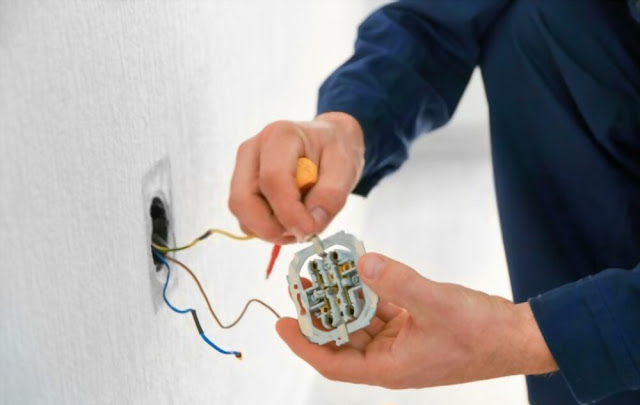Several factors influence the cost of electrical switch installation. These include the cost of labor, supplies, and the amount of work that needs to be done.
Always turn off the power to the switch at your breaker box
before beginning any electrical project. Use a voltage tester to make sure that
there is no current flowing through the wires.
Wiring
The first step in replacing a switch is to loosen the screws
holding the terminal wires. Using pliers if needed, free the wires and then
disconnect them. Make note of the bare ground wire, which should be capped with
a piece of black or red electrical tape. It may also have a tab of brown PVC
sleeving over the blue core of the switch drop cable to indicate it can be live.
Next, check the wires to see if there are two feeds (one
power, one to the light) or just one. If there is, disconnect the power by
shutting off the appropriate breaker in your service panel. You will then see
two black wires, each connected to a screw on the switch box and both should be
covered with a yellow wire nut. There will also be three white (neutral) wires
and one of them should be the shortest, connecting to the green terminal on the
switch.
Switches
Electric Switches Installation
has two conductive pieces or contacts that touch to complete (make) the circuit
and separate to open (break) it. They are usually made from metals selected for
corrosion resistance, hardness, mechanical strength and abrasion resistance,
electrical conductivity, and low toxicity.
Always turn off the power at your breaker panel before
starting to work on any electrical project. Remove the switch cover and use a
non-contact voltage tester to verify that there is no live electricity on any
of the wires in the electrical box.
If there is, replace the breaker. Next, take each hot wire
and trim off about a half inch of insulation to expose the bare end. Using wire
strippers, strip off any additional insulation to expose the copper core. Each
bare wire should be bent into a hook shape that will fit around a screw
terminal on the new switch. Start with the black wire and wrap it clockwise
around one of the brass screws, then do the white wires in the same way,
followed by the green/bare grounding wire. Tighten each screw and give a tug to
check that the connections are secure.
Switch Boxes
The switch box in which the switches are installed is a
metal or plastic device in the wall that contains circuit wires connected to
the breaker through screw terminals. It may have a cover or no cover at all,
depending on the configuration of the wiring. In either case, the switch box
has device-mounting tabs for installation in new work applications and a cover
for existing covered walls.
There are two black (hot) wires connected to the switch
terminal screws. The switch closes to interrupt the passing of electricity when
switched ON and opens to allow power to pass to light bulbs, ceiling lights,
and so on when switched OFF.
Examine the ends of these circuit wires for signs of wear
and tear. If they're loose or have bare copper showing, trim off about 3/4 inch
with wire strippers and bend the end into a hook-like shape. This is called
"pigtailing" and is used to connect metal electrical boxes to circuit
grounding wires.
Wall Plates
A switch plate is like a decorative frame for a light switch
or outlet. They come in many styles and finishes to match or complement wall
paint or trim. They also serve as a functional way to identify which switch
controls what outlet.
Toggle switches are paired with matching wall plates that
are available in white, almond, pewter, and black. They're available in
standard and large sizes to accommodate a variety of multi-gang configurations.
Before you install a new light switch, make sure the power
is disconnected by switching off the circuit breaker that powers it (or if you
use fuses, unscrew the appropriate fuse). Then carefully remove the old switch
faceplate and take a picture of the wiring for reference.

Comments
Post a Comment